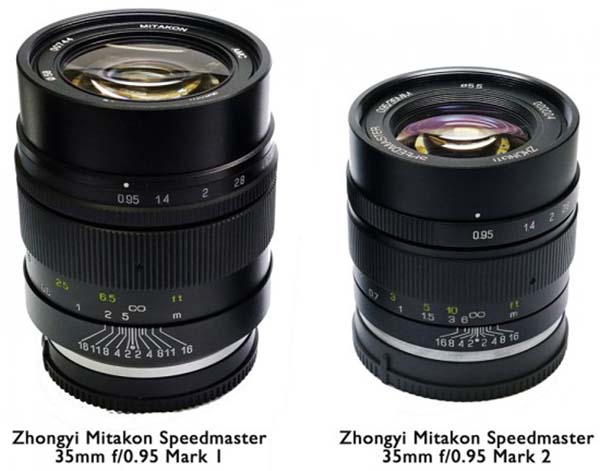The full name is hard to remember: Shenyang Zhongyi Optical and Electronic Company. So much so that they themselves will shorten it in ZY Optics. Perhaps some will remember them if we add that it is the manufacturer who produced the optical Mitakon 1984-2004.
Today there is a better chance for the Chinese manufacturer to be remembered. Specializing in optical super-bright, has announced the availability of the second version of its Speedmaster Mitakon 35mm f / 0.95.
Designed for APS-C mirrorless, on which is roughly equivalent to a standard, is available E-mount Sony, Fujifilm X and Canon EOS-M, and can be purchased online at a price of $ 599.
The optical scheme includes 11 elements in 8 groups, including 6 special items (1 low dispersion, 3 + 2 high refractive index) that, according to the manufacturer increases the resolution by 30% compared to the first version. Measuring just 63x60mm, weighs 460g, and uses 55mm filters. Making strictly manual focus.
Today there is a better chance for the Chinese manufacturer to be remembered. Specializing in optical super-bright, has announced the availability of the second version of its Speedmaster Mitakon 35mm f / 0.95.
Designed for APS-C mirrorless, on which is roughly equivalent to a standard, is available E-mount Sony, Fujifilm X and Canon EOS-M, and can be purchased online at a price of $ 599.
The optical scheme includes 11 elements in 8 groups, including 6 special items (1 low dispersion, 3 + 2 high refractive index) that, according to the manufacturer increases the resolution by 30% compared to the first version. Measuring just 63x60mm, weighs 460g, and uses 55mm filters. Making strictly manual focus.

Comments
Post a Comment